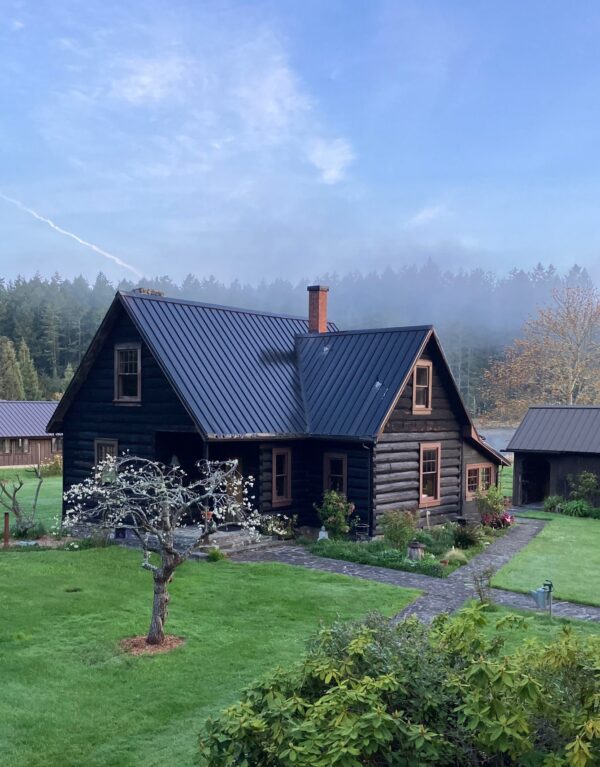
April morning at the Tharald house, Ellis Preserve, Shaw Island
The Preservation Trust has received a Washington State Heritage Capital Grant for repairs to historic structures at the Tharald Homestead on the Marilyn and Fred Ellis Preserve, Shaw Island. The 159-acre property in the heart of the preserve was homesteaded by Norwegian emigrant brothers Theodore and Thomas Tharald in 1883 and is on the National Historic Register.
The purpose of the Heritage Capital Projects program is to provide public access and support the capital needs of facilities that preserve and interpret Washington’s history.
Applications are evaluated on project planning, organizational capacity, historical interpretation and preservation, community support, and operations and maintenance stability. Grantees must maintain the site and continue providing public access to history through field best practices for the 13-year monitoring period after project completion. After reviewing applications, the HCP advisory panel ranks all applications for funding and that ranked list is submitted to the legislature. This year, 27 projects from around the state were funded for a total of $10 million.
The $160,000 received by the Trust for the 2023-2025 biennium will be used to ensure the longevity of the Tharald log house and the library/interpretive building, as well as the collections they contain. Projects will include weatherization, replacement/repairs to roof vents, gutters and flashing on the log house, electrical upgrades, securing the field stone foundation, and treating for powder post beetles.
“There is not much exciting about vapor barriers and breaker boxes,” says Ellis Preserve Curator Ruthie Dougherty, “until you realize how essential climate control is, and the risks that roof damage and antiquated wiring pose.”
While much of the work that’s done over the next two years won’t be visible to visitors, it will be an important investment in long-term stewardship at the preserve. The safety and security of the homestead will allow us to continue to share natural and cultural history education and research at a site that exemplifies the breadth of our regional heritage – from generations of pre-European Coast Salish peoples to today.
